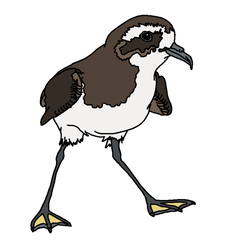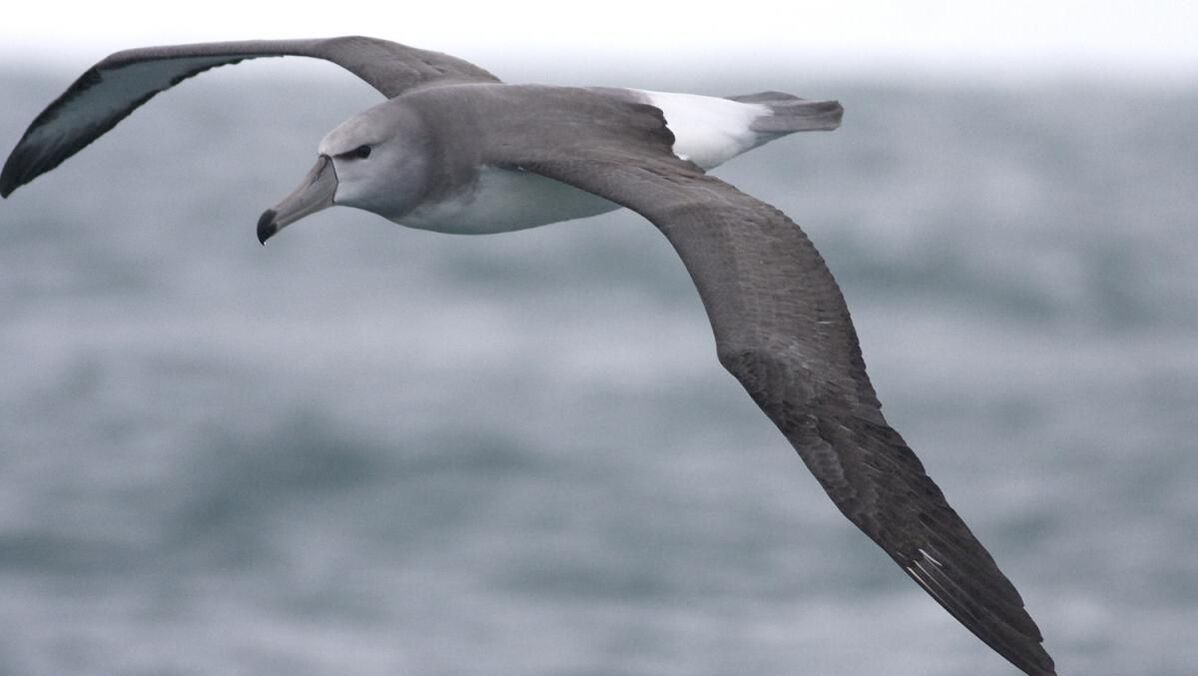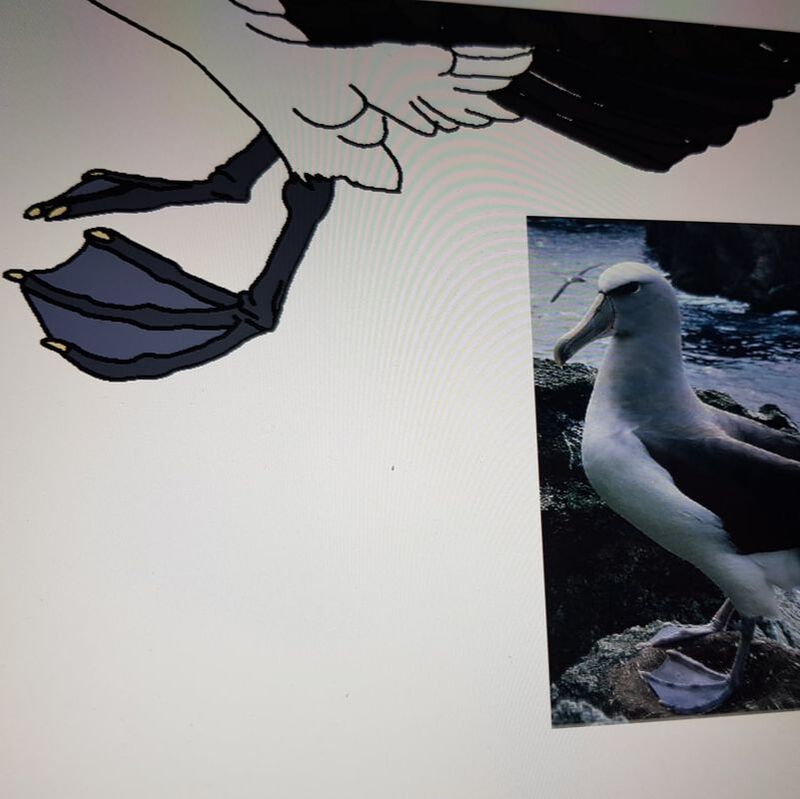The Salvin’s mollymawk
I have already drawn two other birds referred to as “toroa” in this series. So, how do we differentiate between them?

Click to read about the Gibson’s wandering albatross Albatross or Toroa
|

Click to read about the Antipodean wandering albatross or Toroa
|
Albatross or mollymawk?
OK, so, both.
A
mollymawk is a type of albatross.
Salvin’s mollymawk is a typical medium-sized albatross. It is black across the upperwings, with a white lower back and rump and black tip to the tail. The underparts are white with narrow black borders under the wing and a small black notch in the “armpit” at the base of the leading edge of the wing. The head, throat and nape are pale grey, creating a hooded effect. The bill is grey-green, with a paler top and bottom and a black spot at the tip of the lower bill. Juveniles fledge with olive-brown bills with a dark tip, but apparently immediately depart New Zealand waters, and do not return until they have adult colouration.Source:
NZ birds online
Ok, that’s convenient – they look pretty different from the other two toroa. But there are other species that are very similar – probably a good idea to make sure that I show those differences clearly!
Similar species: White-capped and Chatham Island mollymawks are close relatives, but all are separated by the degree of grey on the head and the bill colour. White-capped mollymawk has a white head and neck, with a small black patch in front of the eyes and a grey wash on the cheeks. Its bill has grey-blue sides with yellowish top, bottom and tip. Chatham Island mollymawk is the darkest-faced of the three and has a bright yellow bill with a dark spot near the tip of the lower mandible. Juveniles of Buller’s and Salvin’s mollymawks are very similar, but both species fly across the Pacific Ocean to seas off Chile and Peru as soon as they fledge. Juvenile Buller’s mollymawks are smaller and slimmer, with less robust bills.
Source:
NZ birds online
Looks like the white-capped mollymawk is the bottom of the two birds in that photo, then!

Salvin’s mollymawk. Adult in fresh plumage. At sea off Stewart Island, November 2017. Image © Les Feasey by Les Feasey
|

Salvin’s mollymawk. Adult on water with adult white-capped mollymawk. Cook Strait, Wellington, New Zealand, July 2012. Image © Michael Szabo by Michael Szabo
|
An albatross is a petrel?
Albatrosses belong to the Procellariiformes, or petrels, a distinctive group of marine birds readily identified by their nostrils being sheathed in prominent horny tubes arising near the base of the bill. Other features of petrels are the hooked beak tip, long legs, webbed feet for swimming, and a thick coat of feathers with insulation usually augmented by a layer of fat below the skin. Like other seabirds they swallow salt water when feeding, so they have a salt gland above each eye. This removes excess salt from their bloodstream. The salty solution then drains from the tubes along their bill.Source:
Te Ara
Well, that’s fascinating! I wondered what those weird nostrils were on the beaks of some of the birds that I have already drawn! And yes, they were petrels!

Click the image to learn more about the Kermadec petrel
|

Click the image to learn more about the taiko
|
Right, but the albatrosses don’t seem to have those lumpy beaks…
[Petrels] have nasal passages that attach to the upper bill called naricorns, although the nostrils on the albatross are on the sides of the bill.
Source:
TERRAIN
Ok, great, that makes sense. Time to start drawing!
Description

Salvin’s mollymawk. Adult ventral view (below an adult black-browed mollymawk). Cook Strait, Near Wellington, August 2014. Image © Kyle Morrison by Kyle Morrison
|

Salvin’s mollymawk. Immature in flight. At sea off Whanganui, October 2009. Image © Phil Battley by Phil Battley
|
A medium-sized albatross with pale grey head, throat and nape, black across the upperwings, white lower back and rump, black-tipped white tail, and a grey-green bill with paler top and bottom and a black spot at the tip of the lower bill. Adults have white underparts, narrow black borders under the wing, and a small black notch in the “armpit” at the base of the leading edge of the wing.Source:
NZ birds online

Salvin’s mollymawk. Adult on pedestal nest. Toru Islet, Western Chain, Snares, October 2009. Image © Matt Charteris by Matt Charteris
|

Salvin’s mollymawk. Downy chicks on nests. Toru Islet, Snares Islands, January 1986. Image © Alan Tennyson by Alan Tennyson
|
How amazingly huge these birds are! Their wingspan is around a metre, and they weigh between 3.4 – 4.4 kg – about the same as a pet cat.
Sketches
I have drawn quite a few seabirds now, and it’s definitely getting easier.
And now it’s time to colour it all in! The feet were a bit of a challenge, though, as they seem to be a different colour in each picture, and they’re not described in any of the text I can find. Oh well, we’re going with the colour of the baby feet.
All finished!

















